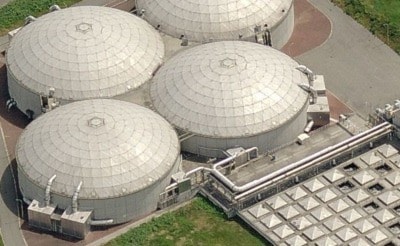A push by Vancouver and North Shore politicians to spread much of the cost of a new Lions Gate sewage treatment plant onto the rest of Metro Vancouver is running into strong resistance in other parts of the region.
The new treatment plant was originally pegged at $400 million but is now estimated at $500 to $700 million.
Unless there are huge contributions from the federal and provincial governments, North Shore and Vancouver residents face skyrocketing utility costs that could add hundreds of dollars to their annual bills.
Under pressure from those municipalities to ease the hit to their taxpayers, Metro Vancouver administrators are contemplating changes to the cost-allocation formula that could sharply boost the costs to homeowners in areas like Surrey, Langley and the northeast sector.
"No one has yet convinced me that there's a need for a different formula," said Surrey Coun. Linda Hepner.
She estimates Surrey households could face the equivalent of a two to three per cent property tax hike to pay for the North Shore sewage plant.
Under the existing formula, primary sewage treatment is paid entirely by the local municipality, while the region covers 70 per cent of the cost of upgrades to secondary treatment.
Since an all-new Lions Gate plant is needed, the benefitting Lions Gate sewerage area – Vancouver and the North Shore – must cover much more of the cost than if it was merely an upgrade to secondary at the old site.
The notion of changing the formula now rankles politicians in the other suburbs because they were in the same position years ago when the Annacis Island treatment plant was built.
Back then, Surrey wanted a fairer formula to share the load across the region but North Shore and Vancouver politicians rejected the idea because it would have cost their taxpayers more.
Hepner said the only way she'd accept a revised formula now is if it retroactively takes into account the extra costs paid by cities like Surrey for the Annacis treatment plant, adjusted to today's dollars.
"Our citizens had to pay for a long period of time – the last two decades – the cost of that Annacis plant," she said.
Burnaby Mayor Derek Corrigan said he's not surprised Metro's eastern and northeastern communities have little appetite to pay more to help Vancouver and the North Shore after being rebuffed before.
"Now you want us to start paying for yours too?" he asked. "What all of a sudden made everybody on the North Shore into socialists?"
Corrigan noted Surrey might actually benefit down the road if the formula was overhauled as Annacis will face significant upgrade costs eventually too.
The Iona treatment plant is also supposed to get a $1-billion-plus replacement after Lions Gate.
But Corrigan said it looks like it will be difficult to find a solution all can accept, particularly if cities that paid more for Annacis in the past are to be compensated.
"I can't see how we un-ring this bell."
One advantage of proceeding under the threat of exorbitant rate hikes on the North Shore, Corrigan said, is that there are plenty of Conservative MPs there for locals to lobby to deliver a big federal contribution to the Lions Gate project.
"If anyone has the ear of the Conservative government, it's going to be them."
North Vancouver City Mayor Darrell Mussatto, Metro's utilities committee chair, said Metro staff are working on a new formula and the board could vote on it by early fall.
Compensation for past costs is a critical consideration, he said.
"We want to make sure no one ends up in a negative position."
